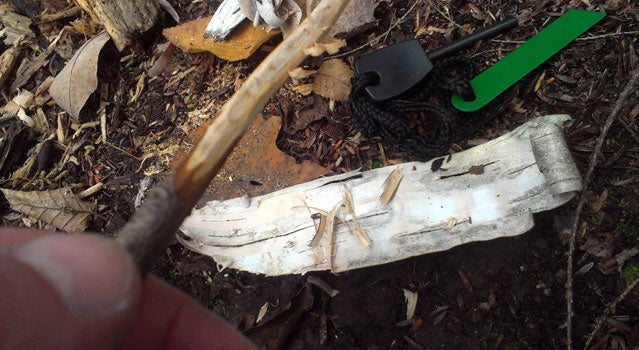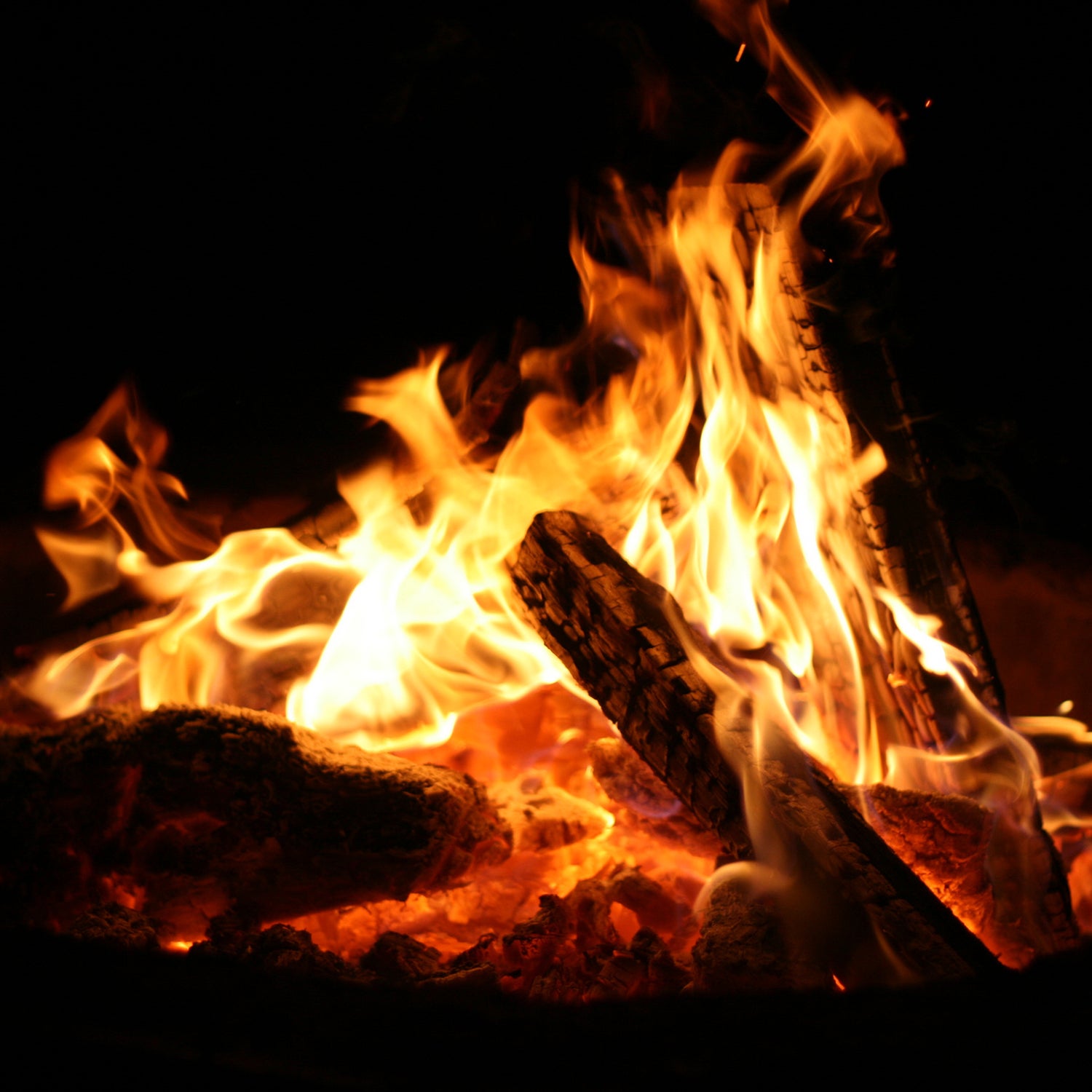Perhaps you just want to test your bushcraft. Or maybe you’ve consumed too many episodes of on Hulu and are hoping to lead a band of impossibly attractive survivalists against the tyranny of a post-technology militia. No matter your impulse, there are several cool tools that can help you start a fire without matches.
The classic methods assume you have no special equipment in an emergency situation. These approaches are either friction-based—bow and drill and fire plow—or light-focusing based, such as an ice lens. Other lens methods involve a magnifying glass, or the much-loved approach.
But let’s assume you actually packed a fire-starting device before heading out. Waterproof matches or a butane lighter are easiest to use, but you should also have an emergency backup in case these relatively fragile and easily consumed methods fail.
Frequently, people refer to all fire starters as a flint and steel kit. The truth is that the mineral flint and a piece of steel creates a puny spark that would be difficult to start a fire with. A better solution was invented by the Swedish Department of Defense and consists of a rod made from a mixture of iron, magnesium, and cerium, called a Swedish FireSteel, and it’s sold by Swedish company . It works in the rain and lasts for thousands of strikes.
When you scrape steel against flint, tiny shavings of the steel burn due to the friction. When you scrape steel against a FireSteel, chunks of the magnesium scrape off and are ignited by oxidizing minerals in the rod. The result is a mini pyrotechnics display in your fire circle.
To test this, I reviewed a $35 premium outdoor adventure knife with an onboard FireSteel as well as a $3 fire starter for the sake of comparison. To make things interesting, I cleared my schedule for two hours, walked deep into the woods in a pouring rainstorm, and tried to start a fire with these products.
Light My Fire Swedish FireKnife
The latest version of the Swedish FireSteel is part of a new multi-purpose tool called the from design company Light My Fire, based in Malmö, Sweden. It’s sold in the United States by Industrial Revolution. The 3.3-ounce knife, which has a 3.5-inch blade and magnesium fire-starting rod cleverly embedded in the handle, is the result of an incredible pool of Scandinavian talent. (To put it in context, it’s as if a Swedish supergroup consisting of Abba, Roxette, and Ace of Base suddenly put out a record.)
Light My Fire, which makes some of the most functional and attractive adventure gear around, provided the overall design, as well as the Swedish FireSteel device buried in the handle. The knife itself was designed by , a highly-respected Swedish hunting and fishing cutlery maker for over 100 years. The blade’s stainless steel comes from Sandvik, a Swedish forger of designer steel. (A neat overview of the steelmaking process and awesome electron microscope images can be found .)
Field Testing
It was raining hard, and the only dry kindling I could find was the dead branches under a large white pine. I cut the bark off to find dry wood underneath and made shavings to use as tinder. The knife blade is incredibly sharp out of the box, and it’s shaped to a nice point—perfect for gutting a small trout or digging out splinters. Despite an afternoon of whittling, the blade seemed as sharp as ever. The holster did feel cheap and plasticy, but it functioned well. I like that when you put this knife in your belt, it clicks home to let you know it’s secure.
I set up in the dry interior of a hollow tree trunk, sheltered from the wind, and occupied by a small rodent. Nevertheless, my attempt to ignite dry wood shavings failed. The back of the FireKnife’s blade is ground perfectly square in order to bite into the magnesium alloy rod. A few tentative strikes with the back of the blade resulted in dainty sparks that bounced off the shavings.
After about an hour, I decided to change tack. I found some dry birch bark, and, pulling it off, discovered tiny curls of very fine paper, the woody equivalent of pashmina under a Himalayan goat’s chin. It was these delicate curls that eventually caught fire inside the hollow tree.
The other thing I found was that you’ve really got to muscle the FireSteel if you want to start anything in the pouring rain. Small sparks are good enough to fire up your average MSR stove. To get big sparks, you have to put your strength into it, scraping enough magnesium to send a miniature roman candle into your shavings. At last, success!
SE 2″ X 3/16″ Flint/Fire Starter with Lanyard

To judge the difference between the premium Swedish fire starter and an inexpensive version from China, I picked up the $3 . Though “flint” is a misnomer, the SE Flint/Fire Starter uses a two-inch piece of steel with a serrated edge to allow you to scrape off magnesium and generate sparks to ignite them along with your tinder.
Both the Swedish and Chinese version created large sparks. Light My Fire contends that their magnesium rod generates sparks of 5,400 degrees Fahrenheit, and I suspect the Chinese tool does the same. Both are completely waterproof: I dunked them, and they both worked fine after I patted them dry with the edge of my shirt. The Swedish version claims to be good for 3,000 ordinary strikes, and the Chinese version, though it has a smaller diameter, seems good for many hundreds of strikes. (Swedish manufacturer sells replacement rods, so you’re covered when the FireKnife runs out.)
The only difference was ergonomics. If you’re going to create a fire on a rainy day, you need to grip the fire rod and steel firmly. Nothing is more comfortable than the grippy rubber handle on the FireKnife. And its magnesium rod has large indents to hold with your fingers. In an emergency, the FireKnife would be the easiest to handle and manipulate with cold hands.
Caveat: I have to admit—though it breaks the verisimilitude of my rainy day fire starting story—that I brought professional welding goggles in the woods with me. Two hours of looking at magnesium sparks with its attendant UV light waves would have likely damaged my eyes, but the goggles kept the experiment safe. One thing to keep in mind if you ever do end up using fire starting tools: enjoy the warm fire, but don’t look too closely at the sparks!


